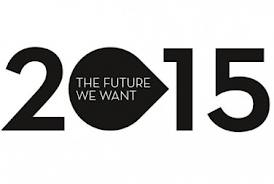There has been lots of talk in recent years in resource development circles about whether or not your organization has a culture of philanthropy. Recently, I’ve started looking at something very different in my work with non-profits. I’ve been looking at a concept described by some experts as the “Tyranny of the Urgent,” which is what many faith-based experts seem to be discussing. While I’m not very religious, I must admit the more I learn, the more I’m concluding this idea describes many organizations’ culture. It also has me wondering if “Tyranny of the Urgent” is the enemy of a “Culture of Philanthropy.”
What is “tyranny of the urgent?“
 Simply, this idea is rooted in the idea that urgent tasks trump important things, which results in consequences for individuals and organizations.
Simply, this idea is rooted in the idea that urgent tasks trump important things, which results in consequences for individuals and organizations.
Charles Hummel, author of Tyranny of the Urgent, describes this phenomenon succinctly in the following passage from a 1994 whitepaper of the same title:
“When we stop long enough to think about it, we realize that our dilemma goes deeper than shortage of time; it is basically a problem of priorities. Hard work doesn’t hurt us. We all know what it is to go full speed for long hours, totally involved in an important task. The resulting weariness is matched by a sense of achievement and joy. Not hard work, but doubt and misgiving produce anxiety as we review a month or a year and become oppressed by the pile of unfinished tasks. We sense uneasily our failure to do what was really important. The winds of other people’s demands, and our own inner compulsions, have driven us onto a reef of frustration. We confess, quite apart from our sins, ‘We have done those things which we ought not to have done, and we have left undone those things which we ought to have done’.”
Can organizations suffer from this?
I’ve seen this first hand in the organizations for which I’ve worked , the organizations I’ve run and many of the organizations that I’ve worked with as a consultant.
And doesn’t it just make sense?
After all, if leadership is one of the big cogs in the big machine we call “organizational development,” then doesn’t it stand to reason … if our leaders suffer from tyranny of the urgent, then they could easily instill it in their organization’s culture through their actions (e.g. hiring, management, direction-setting, governance and procedural practices)?
I’ve seen it . . . so I believe it to be true. I’ll let you judge for yourself.
How to diagnose an organizational culture of urgency?
 I looked around for diagnostic and evaluation tools failed to find anything. Perhaps, I’m using the wrong internet search words or maybe I’m looking in the wrong places. If anyone has seen anything, please share using the comment box on this blog. I’m very interested.
I looked around for diagnostic and evaluation tools failed to find anything. Perhaps, I’m using the wrong internet search words or maybe I’m looking in the wrong places. If anyone has seen anything, please share using the comment box on this blog. I’m very interested.
After striking out, I decided to reverse engineer the question by looking at behaviors I’ve witnessed in non-profit workplaces that seem to fit the definition. The way to use the following checklist is a little bit like Jeff Foxworthy’s comedy sketch “You Might Be A Redneck If …”
In other words, start off by saying, “My organization might suffer from a culture of urgency if …” and then read one of the following bullets:
- … staff keep coming to your office and asking you to stop what you’re doing and help them with their issue (Some people have described this phenomenon as stop-drop-roll. It has also been characterized as the flavor of the month.)
- … board members keep calling/emailing about something upsetting that they just learned about
- … your to-do-list and your staff’s task lists are not prioritized and appear to be never-ending (you might also have a sinking feeling that the organization is spinning its wheels and getting nowhere fast)
- … your organization’s employee turnover rate is high
- … your donor retention rate is low
- … staff constantly talk about workplace stress or even worse the organization’s work doesn’t seem to be fulfilling to them as individuals
- … senior leadership talks about being unable to sleep at night and keep waking up to panic stricken thoughts that they forgot to do something at work
- … people are constantly checking their smart phones throughout the work day and at home as well as responding to phone/email late at night and on weekends
- … fundraising staff and volunteers appear to frantically run from one event/campaign to the next without taking time to evaluate and celebrate
- … donors are telling you, your staff and volunteers something like: “every time I see you, you’re asking me for money“
- … fundraising staff are making lots of errors (e.g. incomplete/inaccurate donor database records, issues with gift acknowledgement letters, etc)
- … board meeting and committee agendas/materials are going out a day or two before the meeting (or perhaps just being handed out at the meeting)
- … organizational policies don’t seem to match up with organizational practices (e.g. fundraising policy may say gift acknowledgement letters are mailed within 24 hours but the practice is actually that letters are mailed at various intervals depending on workload)
Hmmm … it only took me five minutes to assemble this list. I suspect there are MANY more examples. If you want to add to this list, please do so by using the comment box.
So, what’s the big deal?
 Again, I go back to what Hummel tells us in his writings. The consequence is simple … “We have done those things which we ought not to have done, and we have left undone those things which we ought to have done.”
Again, I go back to what Hummel tells us in his writings. The consequence is simple … “We have done those things which we ought not to have done, and we have left undone those things which we ought to have done.”
When this happens for individuals, the result is typically stress, sleeplessness, lack of fulfillment, sense of loss, anger, frustration, helplessness, etc.
When this dynamic is ingrained in an organization’s culture, results can vary, but I’ve personally seen the following:
- poor staff morale
- unfulfilled strategic plans (in fact any plans)
- disengaged boards
- falling revenue
- bankruptcy and dissolution
I’m not making this list up. I’ve seen all of these things happen and the common thread has been an organizational culture with “tyranny of the urgent” at its core.
So, how do we change culture?
Well, this is where the announcer comes on and says, “Stay tuned for our next episode.” 😉
My next post in a few days will attempt to offer a few suggestions, but in the meantime I will leave you to think about this quote from Steve Denning who wrote in a 2011 article for Forbes:
“… an organization’s culture comprises an interlocking set of goals, roles, processes, values, communications practices, attitudes and assumptions.”
Hmmmm, sounds like a complicated fix to me. Stay tuned and let’s see where this goes.
Here’s to your health!
Erik Anderson
Founder & President, The Healthy Non-Profit LLC
www.thehealthynonprofit.com
erik@thehealthynonprofit.com
http://twitter.com/#!/eanderson847
http://www.facebook.com/eanderson847
http://www.linkedin.com/in/erikanderson847


 So, I guess I’m feeling a little bah-humbug about the entire idea of #RetentionWednesday. If I were king for a day (a scary thought), I would decree 2015 “The Year of Retention“.
So, I guess I’m feeling a little bah-humbug about the entire idea of #RetentionWednesday. If I were king for a day (a scary thought), I would decree 2015 “The Year of Retention“.